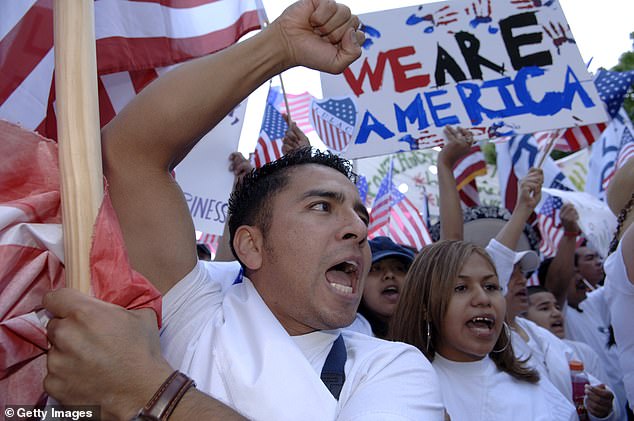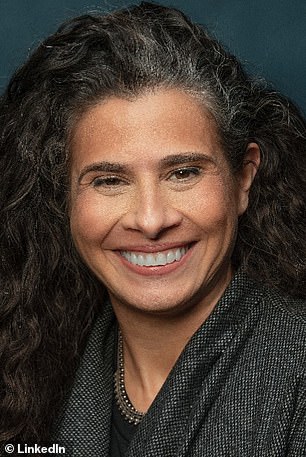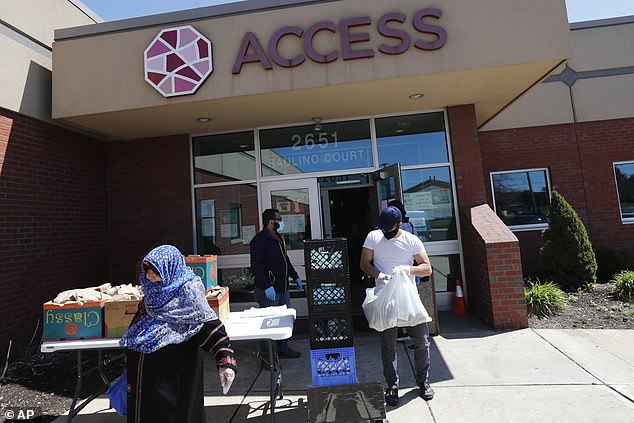White House adds race and ethnicity checkboxes for Hispanics and ‘Middle Eastern and North African’ in biggest shakeup to US census in decades
The 2030 census will include new race and ethnicity check boxes for Hispanics and people of Middle Eastern and North African descent, the White House said Thursday in a major shake-up.
The announcement by the Office of Management and Budget is the first change to race and ethnicity categories in 27 years, and follows years of complaints that groups were being left out of population data.
This evolving process reflects changes in social attitudes and immigration, as well as the desire of members of an increasingly diverse society to see themselves in the federal government’s data.
The change could mean a more accurate count for Hispanic Americans, who make up nearly a fifth of the U.S. population. Americans from the Middle East and North Africa, or MENA, make up about 1.5 percent of the population.
The 2030 census will have some important updates compared to the 2020 edition

The Texas Mega March attracted about half a million Hispanic people, who make up nearly a fifth of the U.S. population
Meeta Anand, census expert at The Leadership Conference on Civil and Human Rights, said the move would have a major “emotional impact” on people who felt they were being overlooked.

Meeta Anand, census expert at The Leadership Conference on Civil and Human Rights
“It’s how we view ourselves as a society,” Anand told AP.
‘You see a desire in people to identify themselves and be reflected in data, so they can tell their own stories.’
Under the revisions, questions about race and ethnicity that were previously asked separately on forms will become a single question.
Respondents can choose multiple categories at once, such as “Black,” “American Indian,” and “Hispanic.”
According to research, many Spanish-speaking people previously didn’t know how to answer the race question.
A Middle East and North Africa category has been added to the available choices for race and ethnicity questions.
That will help people from Lebanon, Iran, Egypt, Syria and elsewhere who previously identified as white.
Now the estimated 3.5 million people will be able to identify with the new group.

The Arab-American community in Dearborn, Michigan, is among those hardest hit by the changes
The changes also eliminate from federal forms the words “Negro” and “Far East,” which may be offensive.
The terms “majority” and “minority” have also disappeared, as some officials say they do not reflect the complexities of race and ethnicity.
A group of federal statisticians and bureaucrats spent two years coming up with the new rules.
They could affect legislative redistricting, civil rights laws, health statistics, and perhaps even politics as the number of people classified as white declines.
Momentum for changing the categories of race and ethnicity grew during the Obama administration in the mid-2010s.
It was halted after Donald Trump became president in 2017 and revived after Democratic President Joe Biden took office in 2021.
The changes will be reflected in data collection, forms, surveys and the once-a-decade census questionnaires, and elsewhere.
Federal agencies have 18 months to submit plans on how they will implement the changes.
The first federal standards on race and ethnicity were established in 1977 to provide consistent data across agencies and provide figures that could help enforce civil rights laws.

Florida State Representative Anna Eskaman says, “It feels good to be seen.”
They were last updated in 1997, when five minimum race categories were delineated: American Indian or Alaska Native, Asian, Black or African American, Native Hawaiian or other Pacific Islander, and white.
Florida state Rep. Anna Eskamani, an Orlando Democrat whose parents are from Iran, said, “It feels good to be seen.”
“Growing up, my family checked the white box because we didn’t know what other box reflected our family,” she told AP.
“It feels meaningful to have that kind of representation.”
But not everyone is on board with the latest revisions.
Some Afro Latinos believe that combining the issue of race and ethnicity will reduce their numbers and representation in the data.
Others are dissatisfied with the way Armenians and Arabs from Sudan and Somalia are not included in the examples used to define people of Middle Eastern or North African background.
Maya Berry, executive director of the Arab American Institute, said that while she was “incredibly pleased” with the new category, that enthusiasm was tempered by the omissions.
“It does not reflect the racial diversity of our community,” Berry said. “And it’s wrong.”
With agencies.
